Separators or Spacers
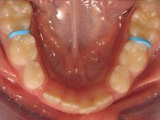
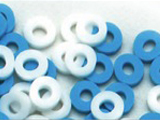
Separators are small rubber rings that are typically placed in between the contacts of molar or premolar teeth. They are designed to make space in between these teeth in order to allow for the placement of metal orthodontic bands. Spacers are generally placed 3-7 days prior to the start of orthodontic treatment. It is not uncommon for separators to cause some minor discomfort after placement. Sticky foods should be avoided with separators as they have a tendency to pull spacers out of place.
Elastics
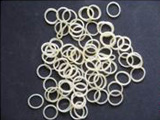
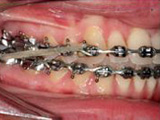
Orthodontic elastics (or rubber bands) are used to improve the manner in which the upper and lower teeth come together. They are an essential component to every orthodontic patient's treatment. Elastics can be worn from top-to-bottom on either side of the mouth and sometimes even in the front. The orthodontist will prescribe exactly how to wear each elastic depending how the teeth and jaws need to move. In order for elastics to work properly, 24/7 wear should be considered. Elastic wear can sometimes be confusing at first -- patients and parents are encouraged to practice placing and removing elastics with our staff at the office when they are prescribed in order to help ensure correct use.
Modified Nance Appliance and Italian Loops

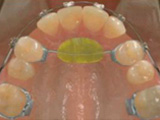
A modified Nance appliance in conjunction with Italian Loop springs are frequently used to correct overbites and other bite problems as an alternative to extracting permanent teeth. The Loop springs move the upper molars backwards into their ideal positions, while the Nance prevents the springs from pushing the front teeth too far forward. The Nance is cemented with bands to the upper first premolars and the plastic part rests against the roof of the mouth. It typically takes patients 2-3 days to get used to the feeling of the Nance appliance inside the mouth.
Expander
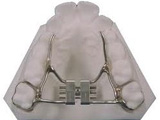
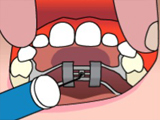
A palatal expander "expands" (or widens) the upper jaw by putting gentle lateral pressure on the upper molars each time the expansion screw in the center of the appliance is turned. For most patients, expanders are typically turned twice a day for a period of 14 days. After 14 days, the orthodontist will assess the progress and determine if the amount of expansion achieved is satisfactory or if more expansion is required. If more expansion is necessary, the orthodontist will prescribe a specific number of additional turns. Once the desired amount of expansion has been achieved, the expander will be stabilized and worn for another 4-6 months to solidify the expansion and to prevent relapse.
Lingual Holding Arch
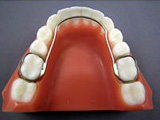
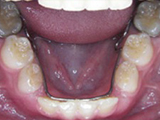
A Lingual Holding Arch is a type of space maintainer that is commonly used to preserve or maintain space in the lower dental arch. They are also frequently used in early treatment as an anchor for elastics wear.
Lip Bumper
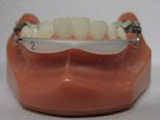
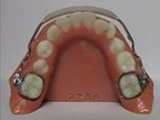
A lip bumper is used to create space and to relieve crowding of the lower front teeth. It is typically used in early orthodontic treatment when there is a mixture of baby and permanent teeth. 24/7 wear is essential for optimal effectiveness.
Headgear
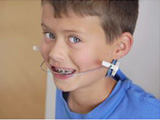
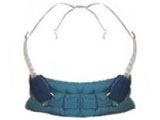
A headgear can be used in younger children to help correct overbites. It works by restraining forward growth of the upper jaw. For best results, headgear should ideally be worn for at least 14 hours per day.
Reverse Pull Headgear
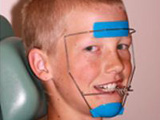
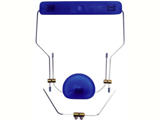
A reverse-pull headgear is typically used in younger children to help correct underbites. It is commonly used in conjunction with a palatal expander. It works by encouraging forward growth of the upper jaw and by restricting forward growth of the lower jaw. For best results, reverse-pull headgear should ideally be worn for at least 14 hours per day.
Retainers
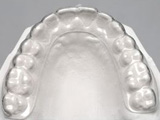
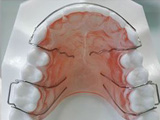
Retainers are prescribed after orthodontic treatment has been completed in order to maintain the final corrected tooth positions. The retainers must be worn 24/7 for a period of time in order to minimize the possibility of the teeth shifting back to where they started. The duration of full time retainer wear varies from patient to patient. The orthodontist will inform you when it is sensible to reduce retainer wear to anything less than full time. Ultimately, retainer wear at night while sleeping should be considered for long-term retention of the teeth.
The most common retainers recommended by our orthodontists are the clear Essix retainers and the more colorful Hawley retainers. If you have a preference for one style of retainer or the other, please make your preference known when braces are removed.
